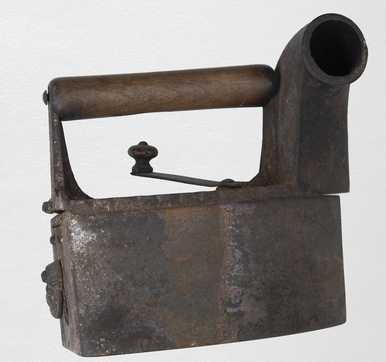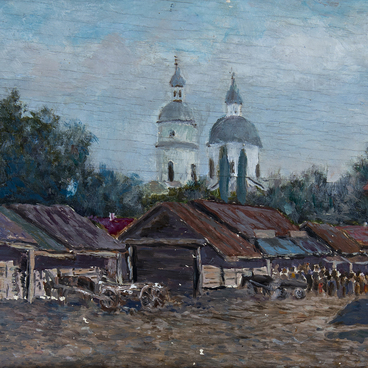The Radogoshch Museum house the icon of the Bogorodica Trojeručica (Three-handed Theotokos). This type of icon is especially revered in Starodubye.
A legend from the Sacred Tradition, a set of creeds, canons and other Christian writings, says that the origin of this icon is associated with an episode from the life of St. John of Damascus. During the iconoclasm in Byzantium, John wrote three treatises in defense of icon worship and sent them to Leo III the Isaurian. Leo Isaurian became enraged but could do nothing, since John was not a subject of his empire, but lived in Damascus and was a minister at the court of the caliph. To prevent John from writing works in defense of icons, the emperor started detracting him. On behalf of John, a forged letter was drawn up in which he allegedly offered the emperor his help in conquering the Syrian capital. This letter and the Emperor’s reply to it were sent to the caliph. He dismissed John and ordered cutting off his right hand. John’s hand was hung out on the town square for intimidation. After some time, John received the severed hand back and, shutting himself in, put it to his arm and began to pray in front of the icon of the Virgin. After a while, he fell asleep, and when he woke up, he found that his hand had been reattached. In gratitude for the healing, John put a hand made of silver next to the icon.
The third hand began to be depicted on exact copies of this icon. Therefore, this image of the Virgin was called Bogorodica Trojeručica (Three-handed Theotokos).
The icon came to Russia in 1661. Monks of the Hilandar Monastery on Mount Athos sent it to Patriarch Nikon for the New Jerusalem Monastery. Then copies of this icon appeared in other monasteries.
Icons of the Bogorodica Trojeručica were painted in the workshop of icon-daubers in Pogar. A new painting school of Starodubsko-Seversky was formed there. A characteristic feature of the works of local icon painters was the yellow background and large green flowers in the upper corners.
The icon from the museum’s collection was painted in Pogar in the 19th century. The base of the icon is a two boards panel. A solid board was used for small icons. For large ones, such as this, more than one board is used. On the reverse side, the boards were reinforced with dowels or wedges.
A legend from the Sacred Tradition, a set of creeds, canons and other Christian writings, says that the origin of this icon is associated with an episode from the life of St. John of Damascus. During the iconoclasm in Byzantium, John wrote three treatises in defense of icon worship and sent them to Leo III the Isaurian. Leo Isaurian became enraged but could do nothing, since John was not a subject of his empire, but lived in Damascus and was a minister at the court of the caliph. To prevent John from writing works in defense of icons, the emperor started detracting him. On behalf of John, a forged letter was drawn up in which he allegedly offered the emperor his help in conquering the Syrian capital. This letter and the Emperor’s reply to it were sent to the caliph. He dismissed John and ordered cutting off his right hand. John’s hand was hung out on the town square for intimidation. After some time, John received the severed hand back and, shutting himself in, put it to his arm and began to pray in front of the icon of the Virgin. After a while, he fell asleep, and when he woke up, he found that his hand had been reattached. In gratitude for the healing, John put a hand made of silver next to the icon.
The third hand began to be depicted on exact copies of this icon. Therefore, this image of the Virgin was called Bogorodica Trojeručica (Three-handed Theotokos).
The icon came to Russia in 1661. Monks of the Hilandar Monastery on Mount Athos sent it to Patriarch Nikon for the New Jerusalem Monastery. Then copies of this icon appeared in other monasteries.
Icons of the Bogorodica Trojeručica were painted in the workshop of icon-daubers in Pogar. A new painting school of Starodubsko-Seversky was formed there. A characteristic feature of the works of local icon painters was the yellow background and large green flowers in the upper corners.
The icon from the museum’s collection was painted in Pogar in the 19th century. The base of the icon is a two boards panel. A solid board was used for small icons. For large ones, such as this, more than one board is used. On the reverse side, the boards were reinforced with dowels or wedges.



